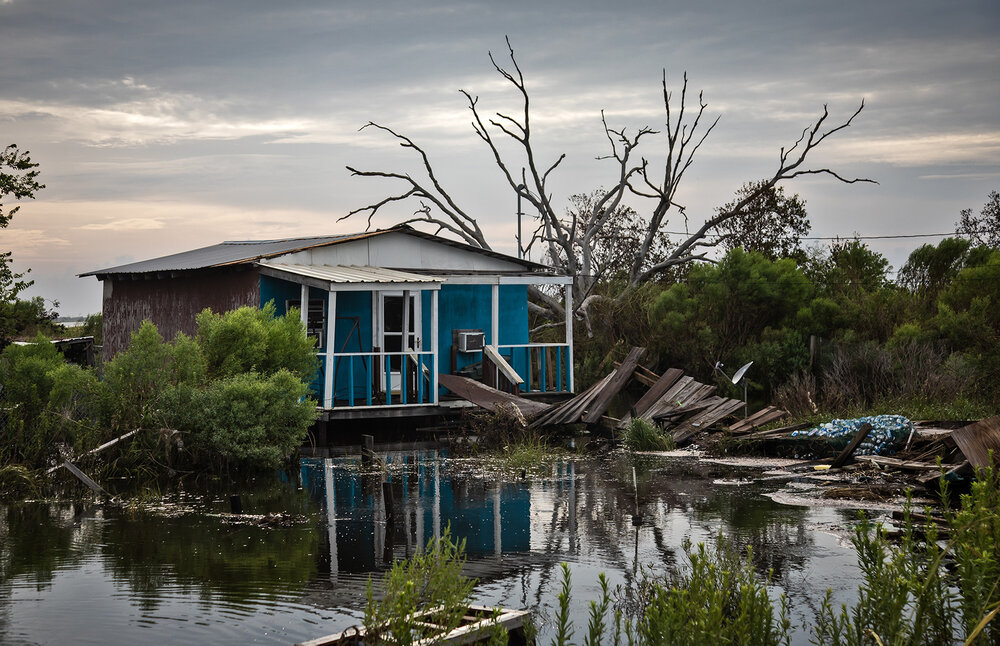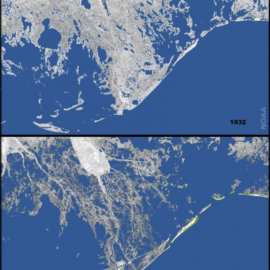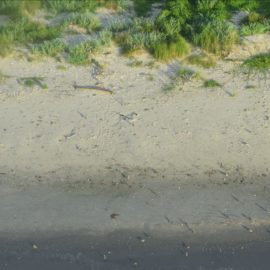
http://www.isledejeancharles.com/
Oil and gas have hurt us. At first no one know that but as the years progressed more and more damage was done.
Anyone who makes a living using words to report what they see often comes upon an example of this undeniable truth: A picture can be worth a thousand words. That experience can leave the writer with a deep sense of frustration, or it can be liberating. It was the latter feeling that washed over me when I was steered to “Follow the Oil,” an interactive online reporting project by New Orleanian Imani Jacqueline Brown tracking damage done in just a few southeastern parishes.
nola.com
Bob Marshall has written many articles and has championed the environment over the years.
I spent decades and countless words explaining to readers what the oil and gas industry was doing to the great estuary that is our home and so fundamental to our unique culture. I tried to explain why our wetlands were not “disappearing” as headlines claimed but were being willfully and brutally destroyed. I reported how they were dredged and strip-mined, how vast marshes key to trout and redfish, shrimp and crabs and millions of wintering waterfowl were being turned into sterile open water laced with discarded drilling pipes and collapsing, leaking storage tanks. I reported how companies were making billions in private profits destroying this great work of nature. But most readers never venture into the world on the other side of the levees they live behind. Many didn’t believe my words; certainly nothing could be that bad. Brown has supplied the remedy to my problem.
A visual storyteller the website takes you through years watching the damage occur.
Using her immense talent as a visual storyteller and impressive skill as an investigative reporter, she has created a series of images that place icons for drilling rigs, pipelines and canals over real-life images of our coast then and now. There is no literary license here, and there are no educated guesses. Everything on these images comes from government permits and records, many of which had to be acquired through Freedom of Information Act requests. What is left on the screen looks like historical images of Berlin or Tokyo after World War II. The only way to deny the destruction is to look away. And “Follow the Oil” is not about one image or one problem. It is fact-based reporting on past and ongoing damage done to the environment and the people who live here. This is accomplished by following a pipeline that begins at one of the oldest drilling fields near Venice and travels to the petrochemical plants in the River Parishes.
You see the wetlands being eaten up and the loss of land is clearly shown.
Along the way visitors find out how the wetlands were eviscerated; see which companies were drilling where and how much money they sucked from the marshes as they killed them; and learn how governments permitted these actions even while admitting how many acres would be destroyed. Perhaps best of all, the project includes a program that gives residents a way to find out what was done to their parishes in southeast Louisiana by whom and how much money they made from those actions. “We wanted to show the vast scale of the destruction, the utter chaos that has been left behind and the fact the damage to the land and to its people is still going on,” said Brown.
Leaving after high school here the web designer went to Columbia and then to London.
A 2005 graduate of Ben Franklin High School, Brown received a bachelor’s in anthropology and visual arts from Columbia University, a master’s from the Centre for Research Architecture at Goldsmiths, University in London, and is now working on a doctorate at Queen Mary University of London. The project was supported by philanthropies and a list of green groups, most prominently Healthy Gulf, which Brown said helped on the research. And she isn’t finished. “More than anything I wanted to create a place for people to find out just how big the damage was, but also to be able to research what has happened to their land and to help us update what is still going on,” she said. She has done that better than any words I could provide. “Follow the Oil” (https://followtheoil.org/) should be required reading for every coastal resident.
Go to the site and look and then see if the investment in oil and gas was worth the pain.



